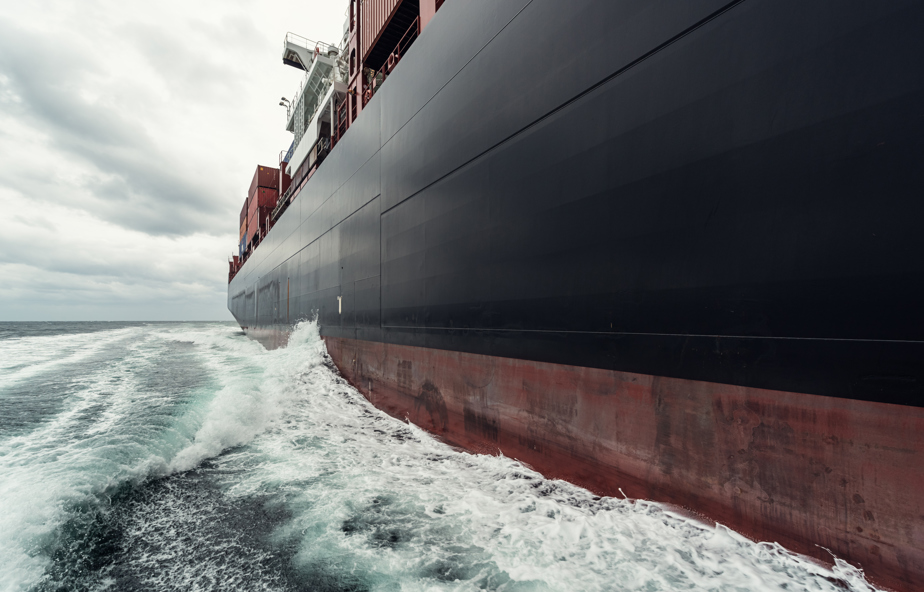Did you know that the shipping industry accounts for the global transport of over 84% of consumer goods? Even though ships produce the least amount of pollution per ton in the transport industry, their sulphur emissions remain one of the highest in the world, emitting 5-10% of the worldwide total for sulphur pollution.
In response, the industry has committed to reducing sulphur pollution with the introduction of the new International Marine Organisation (IMO) 2020 ‘Sulphur Cap,’ coming into effect on January 1st 2020, setting up the industry for a more sustainable future.
What are the effects of sulphur?
High levels of sulphur dioxide in the environment alters and depletes nutrients in soil and waterways, damages materials and buildings, and can create acid rain when it interacts with water. It is also extremely harmful to the human respiratory system.
For this reason, in 2016 it was agreed upon that from January 2020, there would be a new Sulphur Cap introduced as part of Annex VI for the International Convention for the Prevention of Pollution from Ships (known universally as the MARPOL Convention).
What changes will the Sulphur Cap bring?
IMO 2020 hopes to reduce emissions by enforcing a cap of 0.5 wt% sulphur content for the total weight of the fuel carried and burned by vessels each trip, instead of the current 3.5 wt% cap.
Some regions are already nominated as Emission Control Areas (ECAS) where a stricter cap of 0.1% sulphur applies, such as the Baltic Sea, North Sea, some EU ports, and parts of North America. China already has ECAS with a 0.5% Sulphur cap, but this will be amended to 0.1% for ships when IMO 2020 commences.
Nearer to home, Singapore’s Maritime and Port Authority has confirmed that ships calling at Singapore will be inspected based on a risk matrix which looks at compliance and whether a Fuel Oil Non-Availability Report (FONAR) notification has been submitted by the vessel as a mitigation where it had not been possible to obtain the correct type of fuel. Specific coordinates and definitions are provided in MARPOL Annex VII.
How will businesses be affected?
A large proportion of the shipping industry currently uses heavy fuel oil, a residual fuel oil derived from High Sulphur Fuel Oil (HSFO). This traditionally cheaper fuel releases sulphur during combustion, contaminating the atmosphere. Therefore, as a result of IMO 2020, vessels will be required to use low sulphur fuel oils instead unless fitted with a ’scrubber’ exhaust gas cleaning system (EGCS) to remove most of the sulphur oxide, particles and nitrogen oxide.
“Australian operators will be exposed to the new laws as it covers many critical trade routes,” says NTI’s National Hull Product Manager, John James.
“The reduction of shipping’s environmental footprint is a significant win for the industry’s reputation as the changes are a positive step forward for the health of our oceans and atmosphere. However, it will signal the advent of a costly adjustment period for approximately 80,000 vessels operating in mandated MARPOL areas.”
“There will inevitably be consequences, not just for shipowners and operators who will need to source ‘cleaner’ fuel or install scrubbers, but also for oil producers, as refineries with the capability of producing compliant products will have an advantage over others that do not supply cleaner fuels. In addition, Port states will need to make compliant or alternative fuels available, and provide adequate facilities both for testing and to deal with the waste products from the use of scrubbers,” says Mr James.
IMO 2020 will cover all ships navigating in open and national waters of countries that employ the MARPOL Annex VI regulation; 96% of the world’s tonnage is already registered understates that have ratified MARPOL Annex VI.
How can operators stay on target for the new cap?
The three main compliance solutions, dependant on the vessel, include:
- Keep the same fuel and treat exhaust gas with scrubbers
- Change fuel quality/mix with LSFO, VLSFO or MGO (marine gas oil)
- Change type of fuel and propulsion, such as LNG
In order to comply, there will be substantial amendments to consider, such as the need for improved marine crew training and enhanced engine and pump design. Retro-fitting of scrubbers may also raise vessel values, increasing premium costs with the possibility of more claims being lodged for issues regarding new fuel interactions with original engines and pumps.
While options are limited at this stage, Mr James is positive that the development of new solutions and systems will arise in the coming years to help meet environmental targets that are financially viable and operationally practical.
Where to from here?
“We understand the challenges these changes will create for all parties involved in sea trade and we will endeavour to support our clients as best we can,” concludes Mr James.
Speak to your local broker about our Hull Protect policy, designed to keep vessels covered for the uncharted waters of the upcoming Sulphur Cap.
